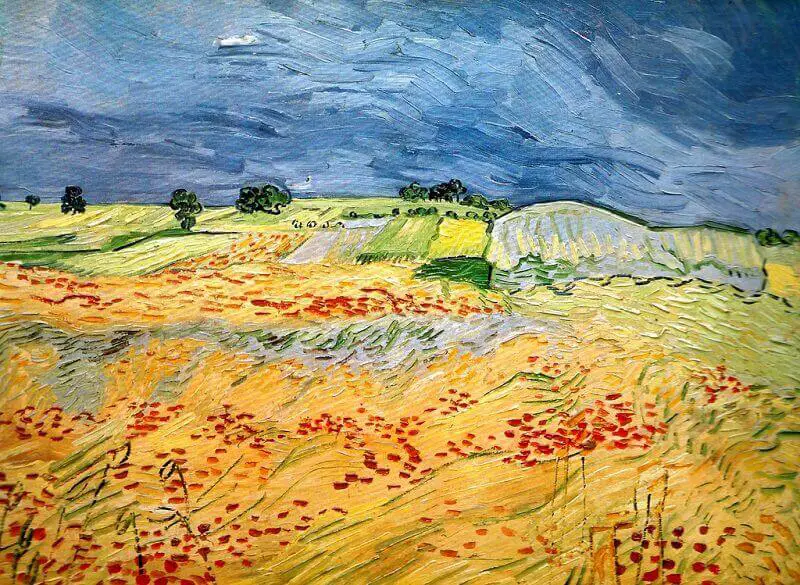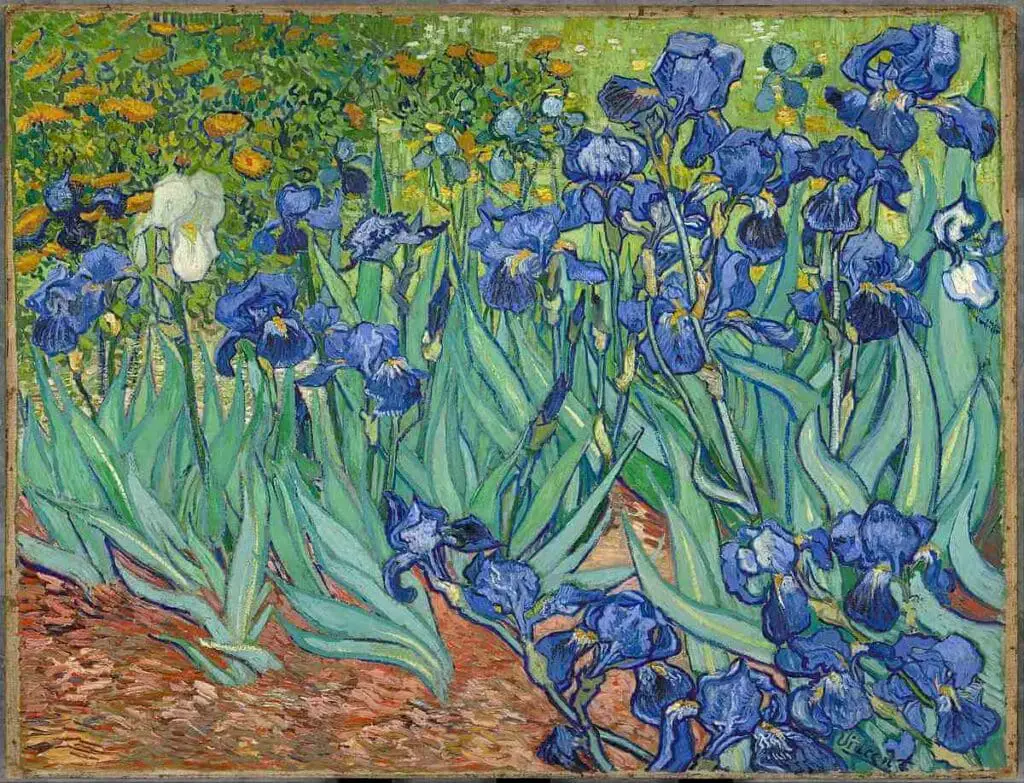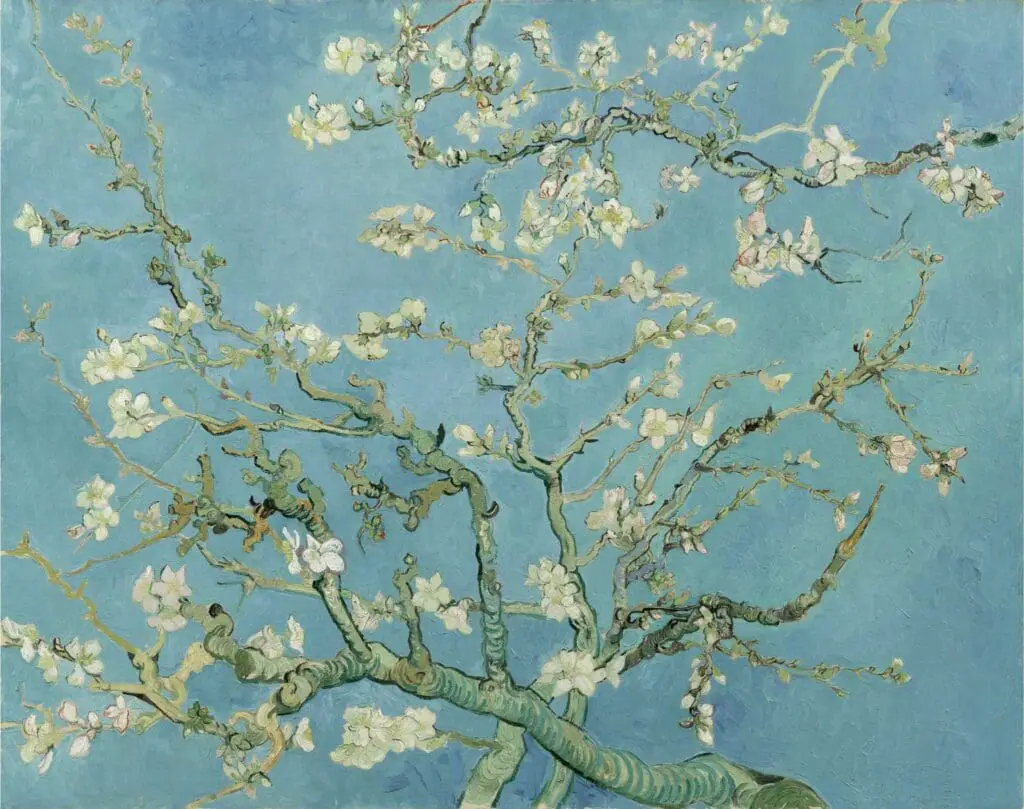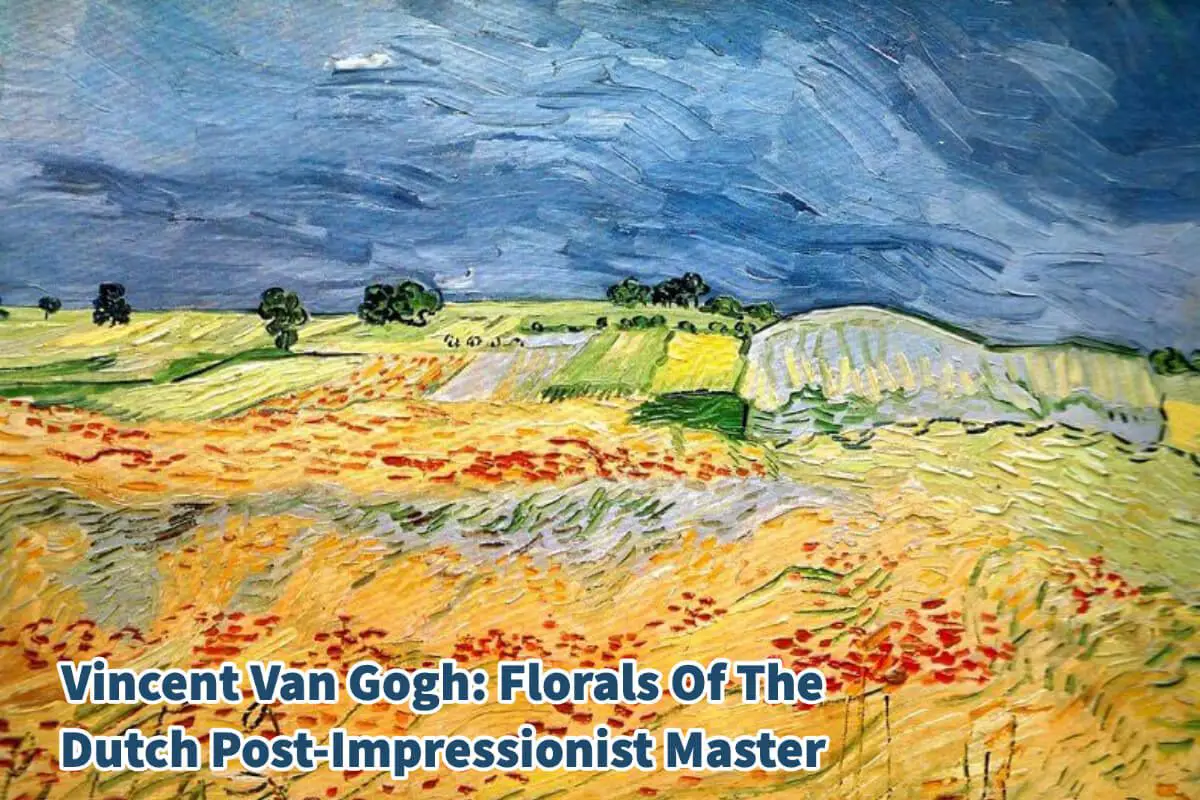Vincent Van Gogh continues to be one of my all-time favorite artists. I love all his flower paintings.
Vincent Van Gogh, the legendary Dutch post-impressionist painter, left an indelible mark on the art world with his distinct style and ability to capture the essence of nature. Among the various subjects Van Gogh explored, flowers held a special place in his heart. His flower paintings exude a sense of vibrancy and beauty, whether portrayed in natural landscapes or carefully arranged still-life compositions.
Table of Contents
- Van Gogh’s Floral Symphony Of Flowers Explore For The Post Impressionist Artistic Master
- Van Gogh’s Flowers As Timeless Inspirations
- Related Questions
Van Gogh’s Floral Symphony Of Flowers Explore For The Post Impressionist Artistic Master
We know that Vincent Van Gogh loved flowers and enjoyed painting them. He saw Sunflowers as a symbol of gratitude. In his own words, he said:
Supposing that the two canvases of sunflowers that are presently at the Vingtistes have certain qualities of colour, and then also that they express an idea symbolizing ‘gratitude’. Is this any different from so many paintings of flowers that are more skilfully painted and which people do not yet sufficiently appreciate, père Quost’s Hollyhocks, Yellow Irises? The magnificent bouquets of peonies which Jeannin produces in abundance?
Vincent van Gogh in A Letter to Albert Aurier, 10 Feb 1890
Throughout his artistic journey, Van Gogh found solace and inspiration in various types of flowers. Poppies, irises, daisies, and sunflowers were among his favorites, as they perfectly complemented his expressive and colorful style.
The artist’s transition from somber and reflective tones to a brighter and more optimistic palette was pivotal in his artistic evolution.
We embark on a captivating journey through Van Gogh’s most extraordinary floral works, delving into the artist’s remarkable career.
Poppies: A Burst Of Red
The vibrant red hues of poppies became a recurring motif in Van Gogh’s paintings. He skillfully juxtaposed these striking colors against verdant greens and soothing blues, creating a visual spectacle that captivated the viewer.
One of his iconic poppy-infused works is “Fields with Blooming Poppies (1890)”, where the fiery red blossoms dance across the canvas, breathing life into the tranquil landscape.

Irises: A Symphony Of Purples
Van Gogh’s irises are celebrated for their elegant purple tones and meticulous depiction. In the renowned painting “Irises” (1889), the artist focuses primarily on capturing the nuances of blue, allowing the delicate irises to take center stage.

The other colors merely serve as supporting characters, emphasizing these mesmerizing blooms’ sheer beauty and allure.
Sunflowers: A Radiant Ode To Nature
No exploration of Van Gogh’s flower paintings would be complete without a mention of his beloved sunflowers. The series of still-life depictions, such as “Sunflowers” (1889), exemplifies his ability to infuse his canvases with these majestic flowers’ bright energy and vitality.

Through bold brushstrokes and a vibrant color palette, Van Gogh immortalized the sunflowers, forever capturing their timeless appeal.
Van Gogh’s Blossoming Almond Branches: A Vision Of Tranquility
“Almond Branches in Blossom” (1888-1890) is one of Van Gogh’s most beloved works featuring flowers. The painting showcases a harmonious blend of vibrant blues, delicate blossoms, and serene blue tones in the background.

With its undeniable Japanese influence, this masterpiece resonates deeply with art enthusiasts across continents, captivating their hearts and minds.
The Evolution Of Van Gogh’s Style: A Journey Of Colors
Van Gogh’s artistic journey is characterized by a remarkable transformation in his style and approach to color. Initially drawn to darker and more somber tones, he later embraced a brighter palette, capturing the natural beauty of the French countryside.
The shift from his earlier works, characterized by introspection and melancholy, to his later vibrant depiction mirrored the artist’s personal and emotional growth.
Van Gogh’s Flowers As Timeless Inspirations
Today, reproductions of Van Gogh’s flower paintings continue to captivate art enthusiasts worldwide, offering a glimpse into the artist’s vision and infusing spaces with inspiration and natural beauty. His later works, with their vibrant depictions of nature and their ability to evoke a sense of joy and vitality, have become immensely popular among art lovers seeking to add a touch of vibrancy to their homes.
Vincent Van Gogh’s flower paintings testify to his profound connection with nature and unparalleled ability to capture its essence on canvas. From the fiery red poppies to the elegant purple irises and the radiant sunflowers, each bloom tells a unique story, inviting viewers to immerse themselves in a world of color, beauty, and emotion.
Van Gogh’s mastery of color and composition, coupled with his evolving style, continues to mesmerize audiences and cement his place as one of the most influential artists in history.
Through his floral symphony, Van Gogh invites us to appreciate the inherent beauty surrounding us, find solace and inspiration in the simplest things, and embrace art’s transformative power. His paintings serve as timeless reminders of the transcendent beauty of nature and the enduring legacy of a visionary artist whose works continue to captivate hearts and minds, transcending time and inspiring generations to come.
As we gaze upon Van Gogh’s breathtaking flower paintings, we are reminded of the extraordinary talent and unwavering passion that propelled him to create works of art that touch the soul. May his vibrant floral compositions forever serve as a testament to the eternal beauty within the natural world and the depths of our being.
Anita Louise Art is dedicated to art education, great artists, and inspiring others to find and create their art. We love art that uplifts and inspires. #ArtToMakeYouSmile! #ArtToMakeYouHappy!
If you are interested to see any of my art, you can find out more by clicking here. If you are interested in what inspires me and my paintings, you can discover more by clicking here.
We have a free newsletter and would love you to be part of our community; you can subscribe to the newsletter by clicking here. If you have any questions, I would be happy to talk to you. You can reach me, Anita, by clicking here.
Subscribe to our Anita Louise Art YouTube Channel with great videos and information by clicking here.
Join us for our podcast “5 Minutes With Art.” Spend just 5 minutes a week with us to discover and learn about great art and artists. You can find out more about our podcast by clicking here.
Related Questions
How Did Vincent van Gogh’s Paintings Become Famous?
Vincent van Gogh’s painting became famous because his sister-in-law took her upon herself after his death and the death of her husband, Theo, to find a way to get his paintings and names out to the world. She was brilliant and savvy in how she did this. By the time she died in 1925, Vicent van Gogh was world-renowned.
By clicking here, you can learn more by reading What Was The Impact Of VinHow Did Vincent van Gogh’s Paintings Become Famous?
Why Is Van Gogh Considered Such a Great Artist?
Many things make Vincent Van Gogh unique and great as an artist. He had a great way to use color in his heart, but more than that, he was an artist who set and paved the way, and his brushstroke technique used color and his design ability. What is interesting is that he did this as a self-taught artist.
By, you can discover more by reading Why Is Van Gogh Considered Such a Great Artist?
How Much Is Van Gogh’s Starry Night Worth?
Van Gogh used color, form, and emotions in his art. He had a bright palette that was individualized for his time. Even though he did not see a lot of success during his life after he died, the impact of his art can be seen in both the Expressionism and Fauvism movements that were taking place in Europe.
By clicking here, you can learn more by reading How Much Is Van Gogh’s Starry Night Worth?, And Other Facts.


